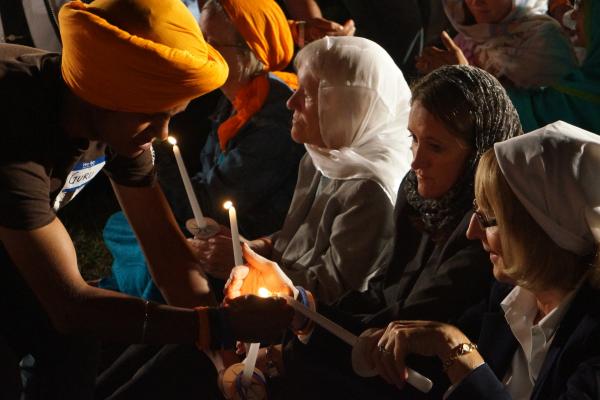On Dec. 18, the U.S. Senate and House of Representatives passed the $1.1 trillion omnibus spending bill to fund the government through next year. The bill included a Republican rider to continue a 17-year-old ban on funding gun research — the Dickey amendment.
Named after former Rep. Jay Dickey, the ban prohibits government spending on gun control advocacy. Though it doesn’t explicitly ban research on gun violence, this clause and its attendant risk to funding has caused government researches to avoid the topic for many years.
2015 was marked by high profile American gun tragedies. Nine people were shot while worshipping in a church in Charleston, S.C. In Oregon, a college campus was attacked by gunfire, killing ten people. A man shot and killed three people at a Planned Parenthood clinic in Colorado. In San Bernardino, Calif., a married couple opened fire on an office holiday party, killing 14 and injuring 22.
As the nation reels from these mass shootings and their political aftermath, the anniversary of the Sandy Hook school shooting has passed once again.
But Congress has repeatedly been unable to repeal the Dickey amendment. And until the ban on funding gun control advocacy is lifted by Congress, this research will not happen.
High profile mass shootings are only a small part of the gun problem. According to the Brady Campaign to Prevent Gun Violence and U.S. News & World Report:
- More than 100,000 people are shot in America each year;
- Of those, more than 33,000 people are killed;
- An average of 297 people are shot in America every day;
- In 2013, over 21,000 people committed suicide with a firearm;
- Suicide by shooting makes up half of all suicides, and is much more likely to be successful in causing death than other methods.
Needless to say, these numbers are staggering, and far outweigh the number of deaths and injuries sustained during mass shootings.
The U.S. government has funded research related to chronic societal problems in the past. In the 1980s, First Lady Nancy Reagan accelerated the so-called “War on Drugs” when she launched the popular “Just Say No” campaign. At the time there was no controversy around the slogan. In the following decades, millions of Americans filled correctional facilities because of stiffer drug penalties. The initial medical and social science research behind the “Just Say No” campaign was funded by a grant from the NIH — an institute that has also stressed the importance of studying gun violence as a public health crisis.
Why was it so easy for government dollars to fund the “Just Say No” campaign, yet mere research on the causes of America's gun use is so vigorously blocked?
Even former Rep. Dickey, who wrote the original research-blocking legislation, is no longer happy about it.
"I wish we had started the proper research and kept it going all this time," Dickey said in a recent interview with the Huffington Post . "I have regrets."
And in a letter on Dec. 1, 2015, calling on the government to fund gun violence research, Dickey wrote:
“Research could have been continued on gun violence without infringing on the rights of gun owners, in the same fashion that the highway industry continued its research without eliminating the automobile… it is my position that somehow or someway we should slowly but methodically fund such research until a solution is reached. Doing nothing is no longer an acceptable solution.”
One of the defining forces in American culture is fear. Those who oppose gun control fear the government taking their Second Amendment rights. The same people are afraid of evil-doers, real or imagined, who they hope to keep at bay with their guns.
Yet at the same time, many Americans live in fear that firearms are so easily available, because people use them to irrationally kill. American parents live in fear while raising children in a world where elementary schools hold lock-down drills to prepare for the possibility of a school shooting. It is more than a little bit likely that this fear is being passed down to the children as well.
Americans are afraid of extremist terrorism — this is clear. Right now many Americans are ready to take action to prevent terrorism, calling for a ban on Syrian refugees, or all Muslims entirely. But if preventing acts of terrorism is an important motivation, why block the government from collecting information on guns in America? If terrorists use American guns to harm American people, isn’t it worth learning as much as possible about the topic? Knowledge could keep us safer.
The reason Congress has repeatedly prevented government research of gun violence is also based on fear. Opponents of gun research fear what it will reveal — uncovering more information might convince more people that there are problems with American gun laws. By avoiding empirical study, it seems clear that we may already suspect the answers.
To some, protecting the right to own a gun outweighs the desire to pursue information that could protect Americans.
There is a saying that the opposite of fear is faith. This nation needs to have faith that the public can handle access to more information about guns. The nation needs to have faith that when research takes place, the government will take the guaranteed rights of the people just as seriously as they did before the research. The nation needs to have faith that it is possible to eliminate some of the sources of their fears.
Until then, those who are ready to open their eyes to the realities of gun violence must have faith that it will happen — sooner rather than later.
Got something to say about what you're reading? We value your feedback!

